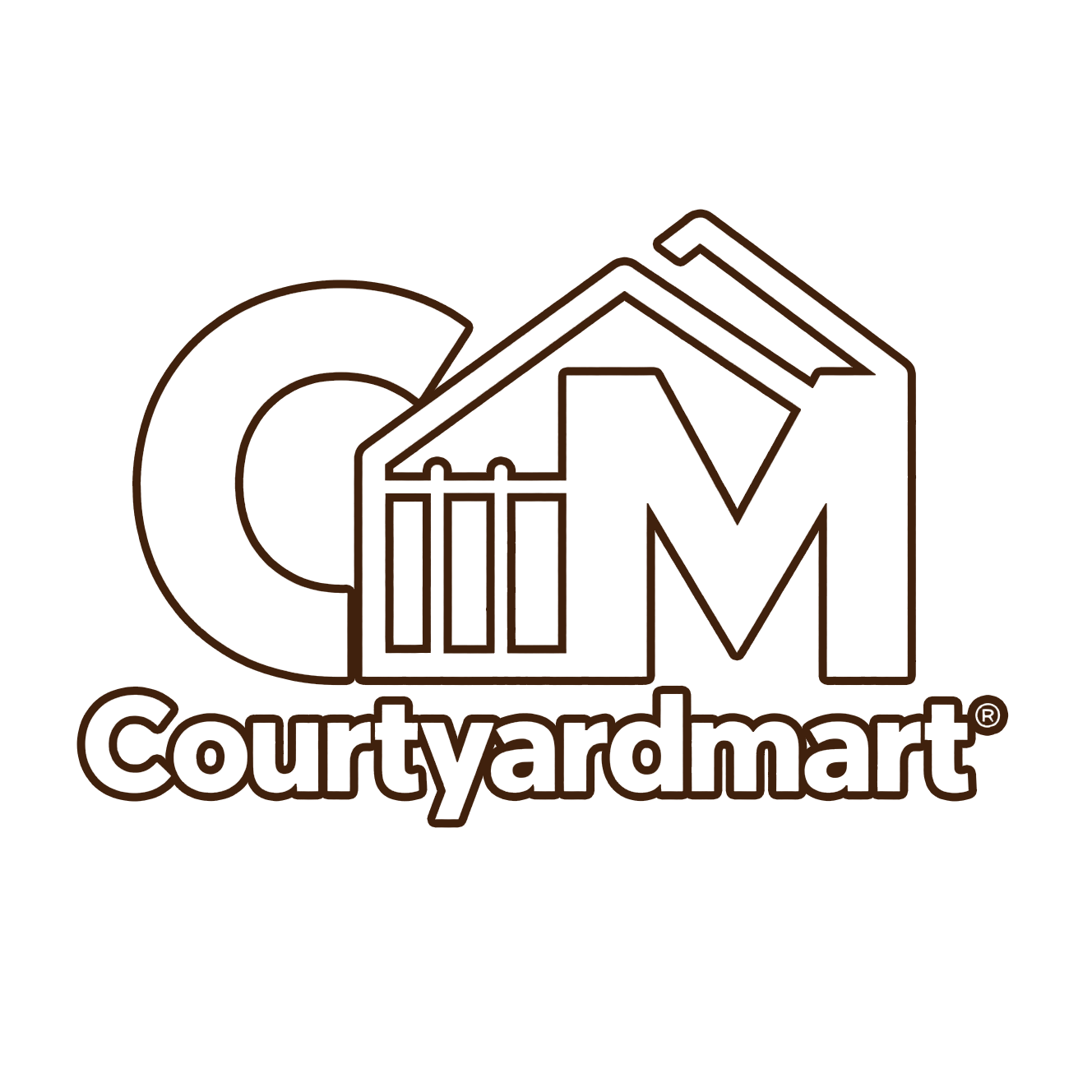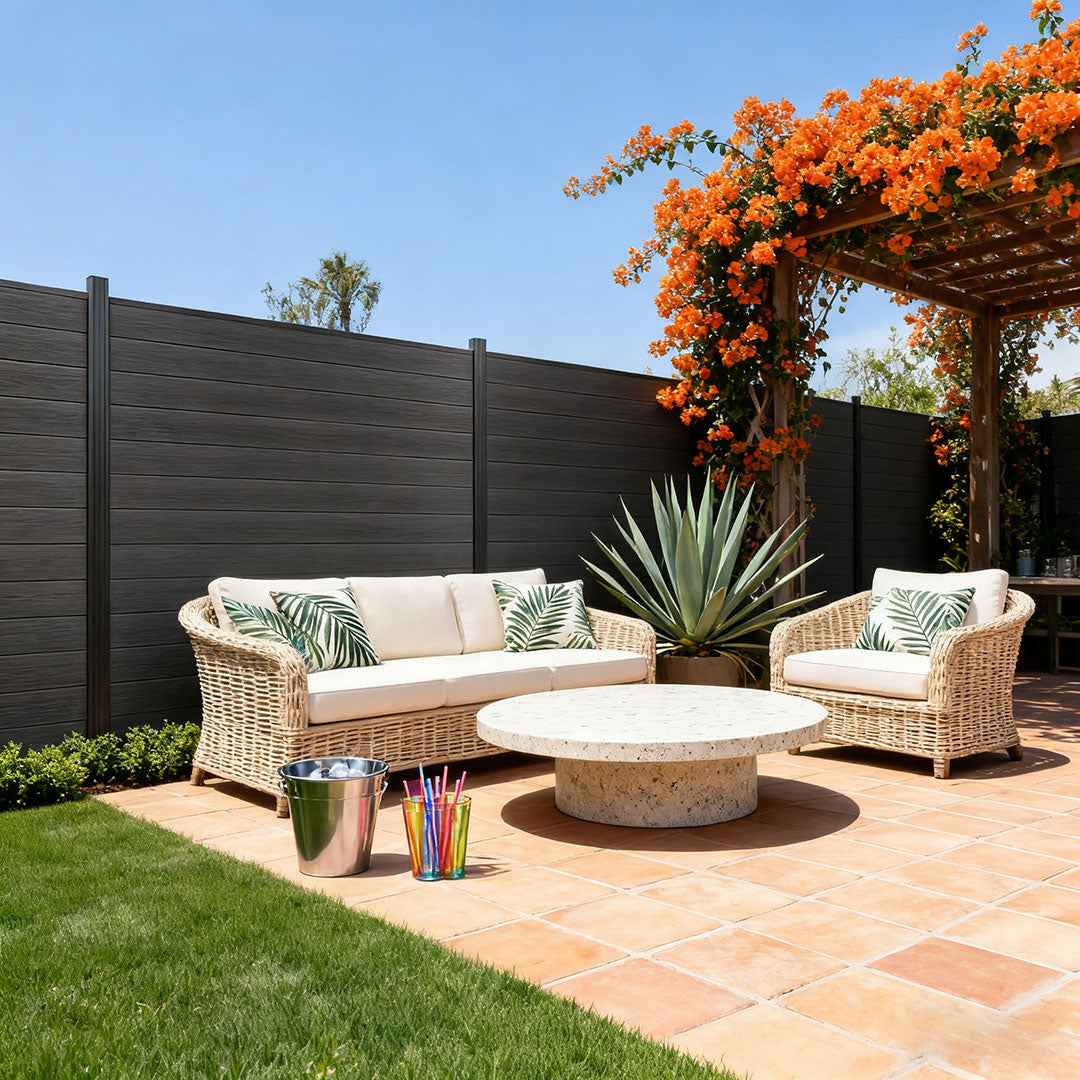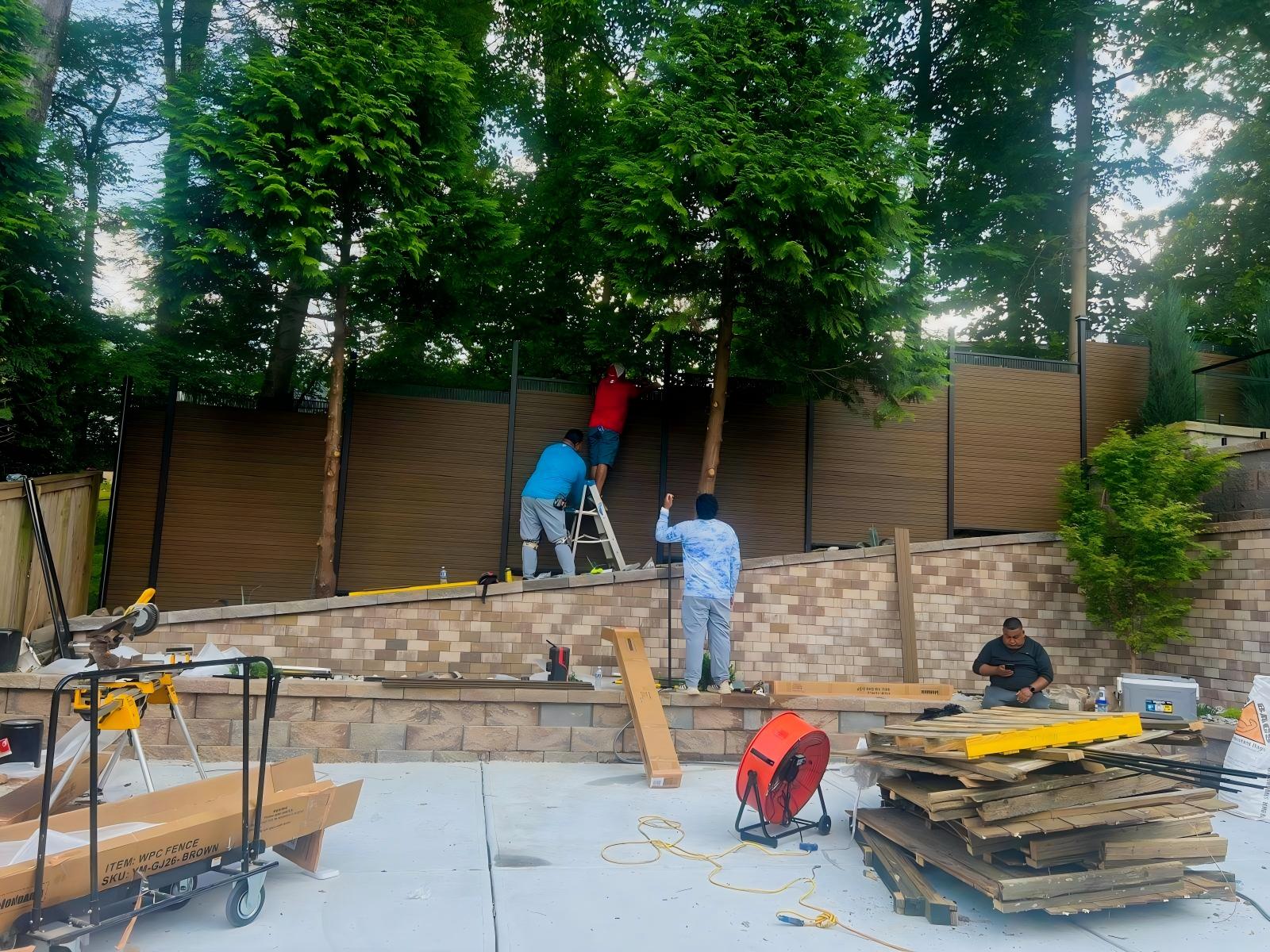
Top Materials for Horizontal Privacy Fences
Building a horizontal privacy fence can significantly enhance your property's aesthetic appeal and increase its value. The right material not only provides privacy but also complements your home's architectural style. In this article, we will explore the top materials for horizontal privacy fences, discussing their pros and cons to help you choose the best one for your needs.
 Horizontal fences are becoming increasingly popular due to their modern look and the illusion of a more expansive space. Unlike traditional vertical fences, horizontal designs can make your yard look wider and more open. They also offer a sleek, contemporary appearance that can boost curb appeal.
Horizontal fences are becoming increasingly popular due to their modern look and the illusion of a more expansive space. Unlike traditional vertical fences, horizontal designs can make your yard look wider and more open. They also offer a sleek, contemporary appearance that can boost curb appeal.
Top Materials for Horizontal Privacy Fences
1. Wood
Pros and Cons
Wood is a classic choice for fences and offers a warm, natural look. It's versatile and can be stained or painted to match your home's exterior. However, wood requires regular maintenance to prevent rot and insect damage.
- Pros: Affordable, easy to work with, and customizable.
- Cons: Needs maintenance, susceptible to weather and pests.
Popular Wood Types
- Cedar: Known for its natural resistance to decay and insects, cedar is a top choice for outdoor projects.
- Redwood: Offers a rich color and natural resistance to insects and decay, but can be more expensive.
- Pine: A budget-friendly option that's easy to paint or stain, though it's less durable than cedar or redwood.
2. Metal
 Metal fences provide a sleek, modern look that complements contemporary home designs. They are durable and require minimal maintenance.
Metal fences provide a sleek, modern look that complements contemporary home designs. They are durable and require minimal maintenance.
Pros and Cons
- Pros: Long-lasting, strong, low maintenance.
- Cons: Can be expensive, limited design flexibility.
Metal Types
- Aluminum: Lightweight, rust-resistant, and easy to install. It's a great option for coastal areas.
- Steel: Offers strength and durability but can rust if not properly coated.
- Wrought Iron: Known for its classic, elegant look, wrought iron is strong but can be costly and requires some maintenance to prevent rust.
3. Vinyl
Vinyl is a popular choice for homeowners seeking a low-maintenance fence. It comes in various styles and colors, making it easy to find a design that suits your property.
Pros and Cons
- Pros: Low maintenance, weather-resistant, easy to clean.
- Cons: Can crack in extreme temperatures, limited color options.
4. Composite
Composite fences combine wood fibers and plastic to create a durable, low-maintenance option that mimics the look of wood.
Pros and Cons
- Pros: Resistant to rot and insects, low maintenance, eco-friendly options available.
- Cons: Can be more expensive than wood, limited color choices.
5. Bamboo

Bamboo is an eco-friendly option that offers a unique, tropical look. It's a fast-growing renewable resource, making it a sustainable choice for environmentally conscious homeowners.
Pros and Cons
- Pros: Sustainable, attractive, lightweight.
- Cons: Can be less durable than other materials, may require sealing for longevity.
Choosing the Best Material for Your Needs
When selecting the best material for your horizontal privacy fence, consider factors like climate, maintenance, budget, and the overall look you want to achieve. Each material offers unique benefits, so weigh the pros and cons based on your specific situation.
Climate Considerations
- Humid or rainy climates: Opt for materials like vinyl, aluminum, or composite that resist moisture.
- Coastal areas: Consider aluminum or vinyl, which resist saltwater corrosion.
- Dry, sunny climates: Wood or bamboo might work well, but ensure they're treated to withstand UV exposure.
Maintenance and Longevity
Consider how much time and effort you're willing to invest in maintaining your fence. Wood requires regular sealing or staining, while materials like vinyl and metal are low maintenance and offer long-lasting durability.
Budget
Your budget will also play a significant role in your decision. Wood and bamboo are often more affordable upfront, but they may require more maintenance over time. On the other hand, materials like metal and composite might have a higher initial cost but offer greater longevity and minimal upkeep.
Installation and Design Tips
- Professional Installation: Consider hiring a professional to ensure your fence is installed correctly, especially for materials like metal or composite.
- Spacing: Pay attention to the spacing between the horizontal boards. Tighter spacing offers more privacy, while wider spacing can create an airy feel.
- Height: Check local regulations for fence height limits, and consider your privacy needs when deciding on the height of your fence.
Conclusion
Selecting the right material for your horizontal privacy fence is crucial to achieving a balance of function, style, and budget. Whether you opt for the classic look of wood, the sleek design of metal, or the low-maintenance appeal of vinyl or composite, each option has its benefits and drawbacks. Consider your specific needs and environment to make the best choice for your property.
By understanding the different materials available and their characteristics, you can make an informed decision that enhances the beauty and privacy of your outdoor space. Start planning your horizontal fence project today, and enjoy the aesthetic and functional benefits it brings to your home.



Leave a comment
This site is protected by hCaptcha and the hCaptcha Privacy Policy and Terms of Service apply.